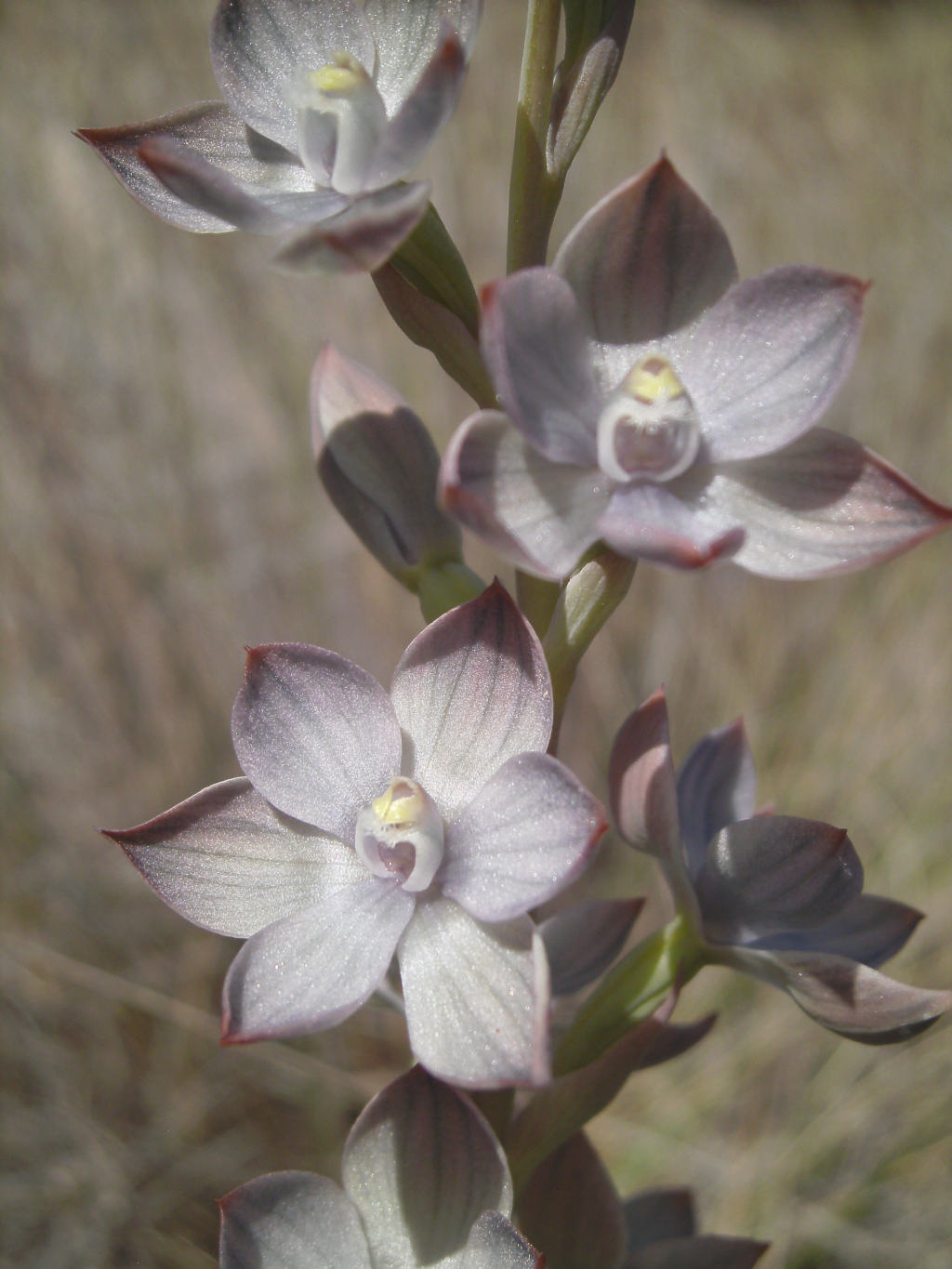Thelymitra epipactoides
F.Muell Metallic Sun-orchidFlowering stem erect, stout, straight, 20–50 cm tall, 2–6 mm diam., green or purplish. Leaf linear to linear-lanceolate, 18–30 cm long, 10–30 mm wide, flattish, fleshy, canaliculate, ribbed abaxially, sheathing at base, dark green with a purplish base. Inflorescence 5–25-flowered. Sterile bracts 1–3, large, leaf-like. Perianth segments ovate to ovate-lanceolate, 10–20 mm long, thick-textured, pink, bronze, green, blue or reddish, often with a coppery sheen. Column ovoid, 5–8 mm long, same colour as perianth but often paler; mid-lobe expanded into an incurved, semi-circular ridge, 2–3 mm long, 1–1.5 mm wide, purplish-brown, attenuated, rising over the anther and higher than the lateral lobes, the yellow tip finely toothed or incised; auxiliary lobes usually incurved and often interlocking, more or less flat, strap-like, apex irregularly toothed, yellow; lateral lobes converging, filiform, obliquely erect, hair-tufts in a long tooth-brush like arrangement, white. Anther inserted towards base of column, apex ending in a moderately long beak. Flowers Sep.–Nov.
Wim, GleP, VVP, GipP, OtP, WaP, Gold, GGr. Also SA. Grows mostly in coastal heathland, grassland and woodland, but extending further inland into similar habitats in the western part of its range. Substrates may be moist or dry sandy soils.
Flowers open freely on warm days and are insect-pollinated.
Weber, J.Z.; Entwisle, T.J. (1994). Thelymitra. In: Walsh, N.G.; Entwisle, T.J., Flora of Victoria Vol. 2, Ferns and Allied Plants, Conifers and Monocotyledons, pp. 840–854. Inkata Press, Melbourne.
 Spinning
Spinning


